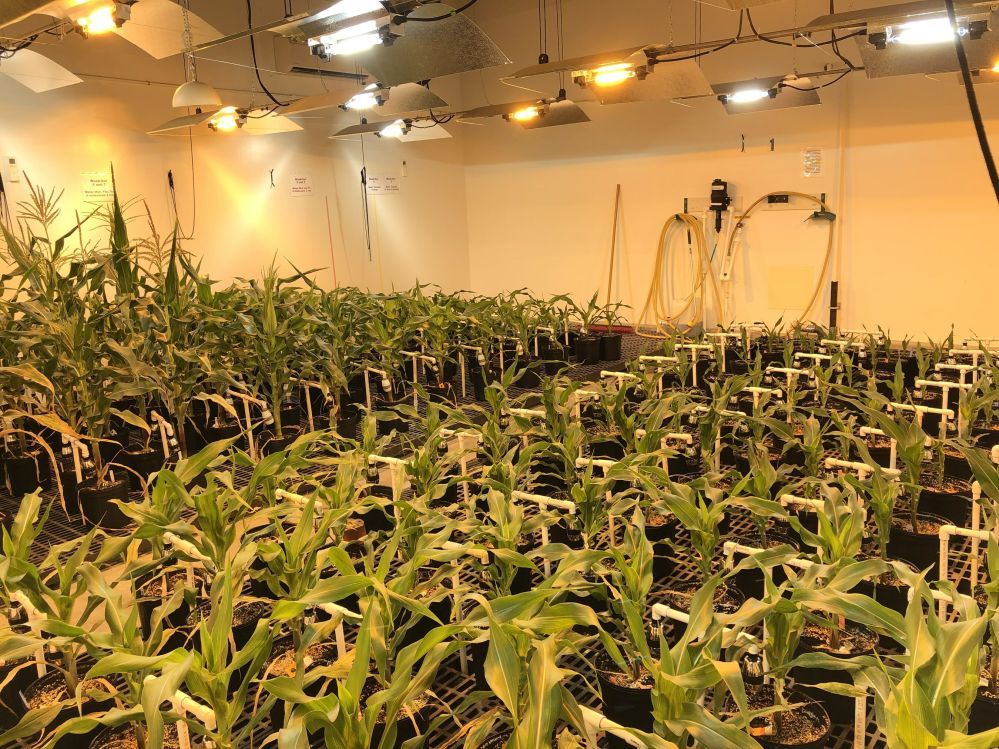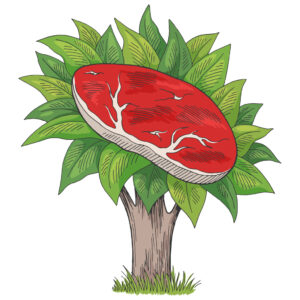Molecular farming startup IngredientWerks has genetically engineered corn crops to express high levels of bovine myoglobin in a process it claims can scale at a fraction of the cost of precision fermentation.
A heme-binding protein found in the muscle tissue of cows, myoglobin imparts a meaty taste, color and aroma to meat alternatives. US-based Motif FoodWorks and Belgium-based Paleo express myoglobin in genetically engineered yeast via precision fermentation, while plant-based meat specialist Impossible Foods makes a related protein called soy leghemoglobin via a similar fermentation-based approach.
While Motif insists myoglobin and soy leghemoglobin are different, Impossible has accused Motif of patent infringement in a lawsuit that is being closely followed in the alt meat industry given that Impossible sees heme as key to its competitive edge.
Heme protein IP wars
IngredientWerks, which recently teamed up with Motif FoodWorks to develop an alternative ‘molecular farming’ approach to heme protein production, claims to be the first to produce myoglobin in corn, and insists it is not infringing Impossible Foods’ IP.
“Our plant-based myoglobin protein ingredient, and our production process using molecular farming in corn is a proprietary application, one that we’ve protected with corresponding patent application filings, that we believe infringes on no other existing or filed IP,” IngredientWerks CEO Matt Plavan told AgFunderNews.
“Being a B2B company, the Motif FoodWorks and Impossible Foods of the world are prospective customers of ours, as we can provide to them this high value ingredient at a fraction of their current cost basis.
“Moreover, we project to begin commercial sale of our myoglobin protein in 24-36 months in late 2025/early 2026, at which point we expect the current IP dispute between the companies [Impossible and Motif] will be resolved.”
‘High-quality, low-cost animal proteins at scale’
Spun off from biotech firm AgriVida last year, Woburn, Massachusetts-based IngredientWerks has filed patents covering the expression of myoglobin, leghemoglobin, and casein in genetically engineered corn crops.
It announced seed funding from Open Prairie and ARCH Venture Partners in February and is currently raising a series A round. Motif is a financial partner in the development program for myoglobin, and “has certain first access rights to commercialize it,” said Plavan.
According to Plavan, IngredientWerks’ approach can be scaled at a fraction of the cost of precision fermentation thanks to lower capex and operational costs and the ability to tap into existing infrastructure. In its latest greenhouse trials, it produced corn plants expressing “well over” 10mg myoglobin per gram of corn, an internal metric he says the company created to determine the commercial viability of its approach.
“When we did the math, we calculated our end product costs would be a fifth to a 10th of those for precision fermentation per kilogram if we could do 10 milligrams per gram,” he said.
“And we’ve already significantly exceeded that, so that’s what we’re most excited about. We believe we could go as high as 15-20mg per gram, but we need to do more testing. By reaching these expression levels, we believe we’ve solved for three of the greatest challenges facing the alternative protein markets today: the production of high-quality, low-cost animal proteins at scale.”
Lower capex and operational costs than precision fermentation
He added: “With precision fermentation, the challenges are not just the capacity bottlenecks and high capex costs of setting up a large-scale fermentation facility, but the ongoing operating costs given all the variables in every batch.
“Producing it [myoglobin] in corn is very consistent and then the rest of the corn [the corn starch and potentially the corn protein] can stay in the commodity supply chain, dramatically lowering our costs of production.”
According to Plavan, corn is an ideal host for a number of reasons, the most obvious being that “there are ethanol producers everywhere who separate the starch and protein from corn, providing a built-in infrastructure.”
But even if it’s cheaper and easier to grow animal proteins in food crops, where there’s already established processing infrastructure and a market for the other parts of the crop, isn’t there still a significant cost to extract and purify the proteins?
Even with extensive downstream processing requirements, it still pales in comparison, from a capex standpoint, to what it takes to build and operate a large-scale precision fermentation facility, claimed Plavan.
“With our approach we’d supply corn to an existing ethanol facility to do the initial separation of components and we would take the protein fraction and extract the myoglobin, which will require an investment of $20-25 million for a facility that would provide industrial scale for a particular region.”
The regulatory pathway
While the regulatory pathway for approving new GM crops can be lengthy, he conceded, the team at IngredientWerks already has experience of going through the US regulatory process to commercialize ingredients from genetically engineered corn when they worked at AgriVida, which brought three such products to market.
But how big is the market for myoglobin in meat alternatives? And are investors as excited about this today as they might have been a couple of years ago given declining sales of alt meat in some key markets such as the US?
“That’s something we continue to investigate by talking to players in the market,” said Plavan. “But a high value protein like this has applications not only in ground beef, but in gravies, sauces and other applications. I can’t mention names but we’re talking to flavor houses and there’s a lot of interest and excitement around utilizing this ingredient.
“If you just look at the global beef market, where 60 billion metric tons are sold… if 5% of that in 10 years switched to alternative proteins and a third of them used myoglobin, that’s a pretty big number.”
Casein production via molecular farming: ‘There’s some rethinking about what the FDA is expecting us all to do’
Asked about producing casein in corn, which IngredientWerks has also filed IP around, he said the FDA’s recent open letter warning about allergen management when producing dairy and egg proteins in food crops had prompted a lot of discussion in the nascent molecular farming space.
“There’s some rethinking about what the FDA is expecting us all to do. So we’re evaluating whether there’s a better way to bring the caseins to market that are not in food crops, that would be a better and lower cost method then having to contend with very strict regulatory oversight by the FDA.
“People are concerned will they even issue planting permits? What will their requirements be, as they made it very clear that they’re very concerned about allergens getting into the primary food supply.”
He added: “We’re currently focusing on myoglobin, but we’ve got three or four very good ideas on how to work around putting casein in a crop that will address the allergen risks.”
Further reading:
FDA warns molecular farming startups of risks if food allergens are not properly managed
















Sponsored
International Fresh Produce Association launches year 3 of its produce accelerator